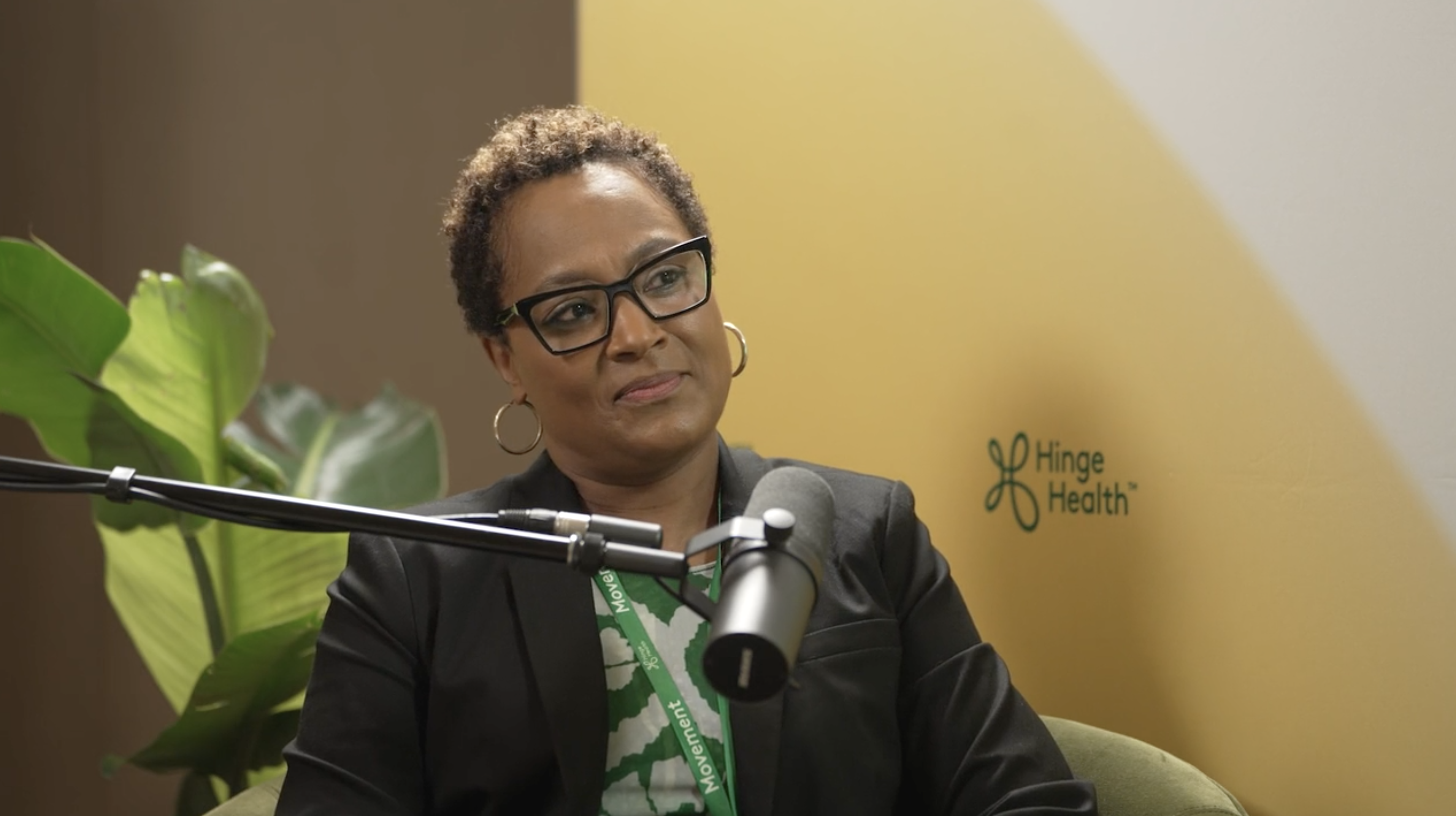US Foods' Solution for High MSK Costs Among a Dispersed Workforce
Movement 2023: On Air
- Hinge Health Learning Center
- Articles
- Movement 2023 On Air: Sue Letang of US Foods
Food supplier and distributor US Foods was starting to see an increase in musculoskeletal (MSK) claims—and it was costing them a lot of money.
Finding a solution that could help was one immediate task to be tackled. Getting their dispersed workforce of around 20,000 employees, the majority of whom are on-the-move warehouse workers or drivers, to learn about and use it was another.
Sue Letang, US Foods Senior Manager of Health and Welfare Benefit Plans, joined Jenny Sucov, Hinge Health Director of Content Marketing, on the Movement 2023 On Air podcast to discuss how turning to Hinge Health helped solve both needs and why her company has remained a client since 2017.
View the entire recording session below, or read on for some highlights.
Jenny Sucov (JS): What brought US Foods to Hinge Health?
Sue Letang (SL): We were looking into point solutions to tackle certain situations and conditions within our population. We were starting to see an increase in MSK claims and it was costing us a lot of money. So we had to find a solution for that.
JS: How was Hinge Health received by your employees?
SL: Our folks love this program. It's one of the most well-received programs we have. We have quite a few folks in it and quite a few great testimonials as well.
JS: Have there been any challenges?
SL: We are 20,000 strong across the United States. We have corporate folks and sales associates, but the majority of our employees are warehouse workers and truck drivers.
Those folks are a little harder to reach because they're not in front of a computer or at a desk while working. So we have to be very creative in how we communicate about our benefits offerings.
JS: What's a benefits outreach strategy that has been successful for US Foods?
SL: Interestingly enough, the idea came from Hinge Health. You were the ones who said that postcards worked best. We were able to confirm that based on tracking codes on the materials sent out.
We also have 'wellness champs,' which are associates who give testimonials that we display on digital signage. People see people like themselves—truck drivers like themselves, warehouse workers like themselves—using these programs.
Like my boss always says, we have to shock the system—go big or go home. And I love doing that.
JS: You said Hinge Health is "special." Can you explain more about that?
SL: My husband did Hinge because he got into a car accident where he was hit from behind at 50 miles per hour by a drunk driver. That messed up his back.
I told him, "We have a program for that." He participated and it was fantastic for him.
He would travel a lot, which caused him a lot of pain. But with the Hinge program, he was able to do it from his hotel room.
From then I knew this program was a bit special. Not only is it at no cost to employees, it's convenient. You can do it wherever, whenever. It's great for folks who work the night shit. It's good to do on your break. It's a win-win.
JS: Did your team get any pushback from leadership when implementing Hinge Health? Was there a demand for proof of ROI? Hard metrics?
SL: Not at all. We needed a solution. At that time, there was nothing else in the market. You could go to a chiropractor, but that was hit or miss.
We just wanted to make sure that folks got the care that they needed.
JS: What are the main reasons you chose to come to Movement 2023?
SL: Conferences are good for networking, so that's one reason.
But I also wanted to come to this event because I read some of the comments about last year's conference being different and one of the best conferences people have been to. I said, 'I've got to do this one.'
And making sure that our folks get the care that they need is important to me. The majority of our folks that need this sort of care are the ones that truly have nowhere to go. They need direction.
Sure. I think so far we have quite a few of these point solutions, and I've learned quite a bit because a lot of them I've seen in the infancy stages where either the first lie in the second or the third or somewhere in between. And what I notice is a lot of people are trying to figure this out when they do really have to.
JS: What advice to you have for other benefits leaders?
SL: I notice a lot of people are trying to figure this out when they don't really have to.
They don't need to reinvent the wheel because someone out there has done it already.
We have quite a few of these point solutions, and I've learned quite a bit because I've seen a lot of them through many stages.
Leverage what you have. Leverage your network. Find out what others have done.
These responses have been edited for clarity and brevity.
Learn more about US Foods' partnership with Hinge Health
Case Study: Solving chronic pain for an on-the-move workforce
